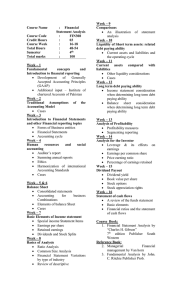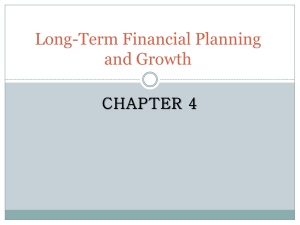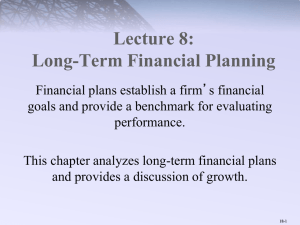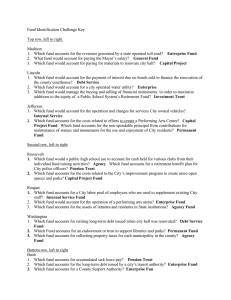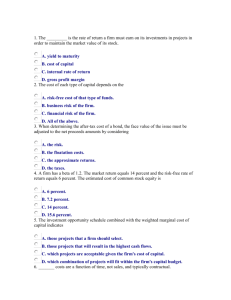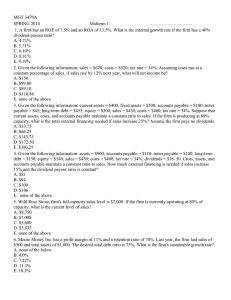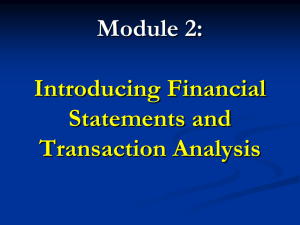1133626408_396000
advertisement
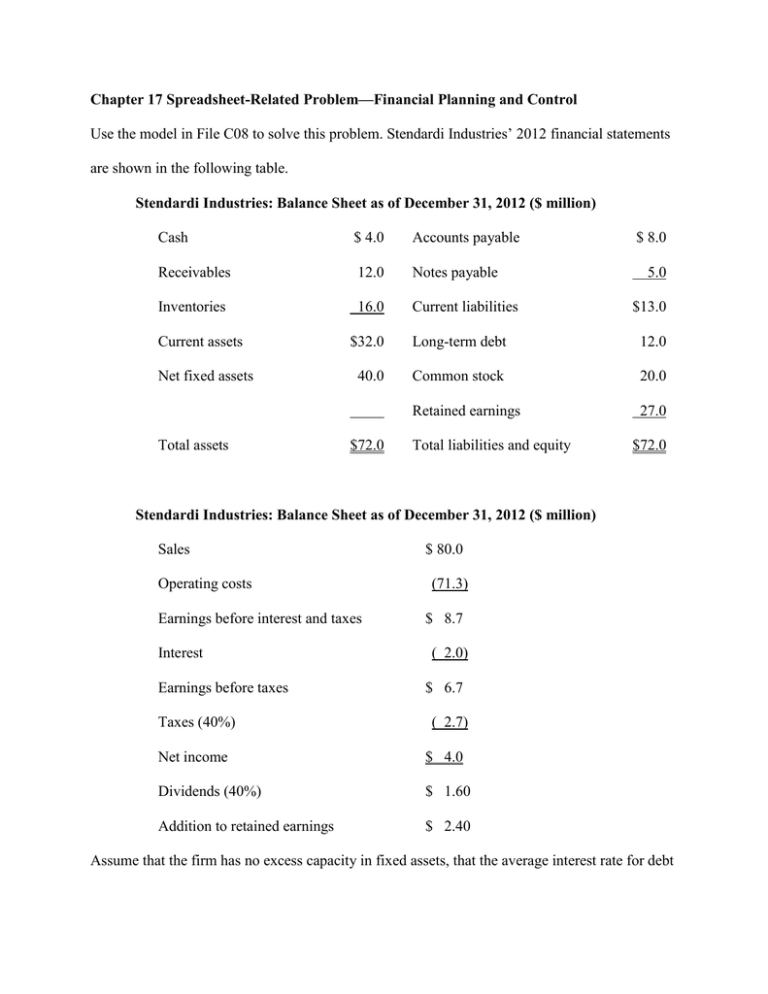
Chapter 17 Spreadsheet-Related Problem—Financial Planning and Control Use the model in File C08 to solve this problem. Stendardi Industries’ 2012 financial statements are shown in the following table. Stendardi Industries: Balance Sheet as of December 31, 2012 ($ million) Cash $ 4.0 Accounts payable Receivables 12.0 Notes payable Inventories 16.0 Current liabilities Current assets Net fixed assets Total assets $ 8.0 5.0 $13.0 $32.0 Long-term debt 12.0 40.0 Common stock 20.0 Retained earnings 27.0 $72.0 Total liabilities and equity $72.0 Stendardi Industries: Balance Sheet as of December 31, 2012 ($ million) Sales Operating costs Earnings before interest and taxes Interest Earnings before taxes Taxes (40%) $ 80.0 (71.3) $ 8.7 ( 2.0) $ 6.7 ( 2.7) Net income $ 4.0 Dividends (40%) $ 1.60 Addition to retained earnings $ 2.40 Assume that the firm has no excess capacity in fixed assets, that the average interest rate for debt is 12 percent, and that the projected annual sales growth rate for the next five years is 15 percent. a. Stendardi plans to finance its additional funds needed with 50 percent short-term debt and 50 percent long-term debt. Using the projected balance sheet method, prepare the firm’s pro forma financial statements for 2013 through 2015. Determine the following: (1) the additional funds needed, (2) the current ratio, (3) the debt ratio, and (4) the return on equity. b. Sales growth could be five percentage points higher or lower than the projected 15 percent. Determine the effect of such variances on AFN and the key ratios. c. Perform an analysis to determine the sensitivity of AFN and the key ratios for 2015 to changes in the dividend payout ratio as specified in the following, assuming that sales grow at a constant 15 percent. What happens to Stendardi’s AFN if the dividend payout ratio (1) increases from 40 percent to 70 percent or (2) decreases from 40 percent to 20 percent?

